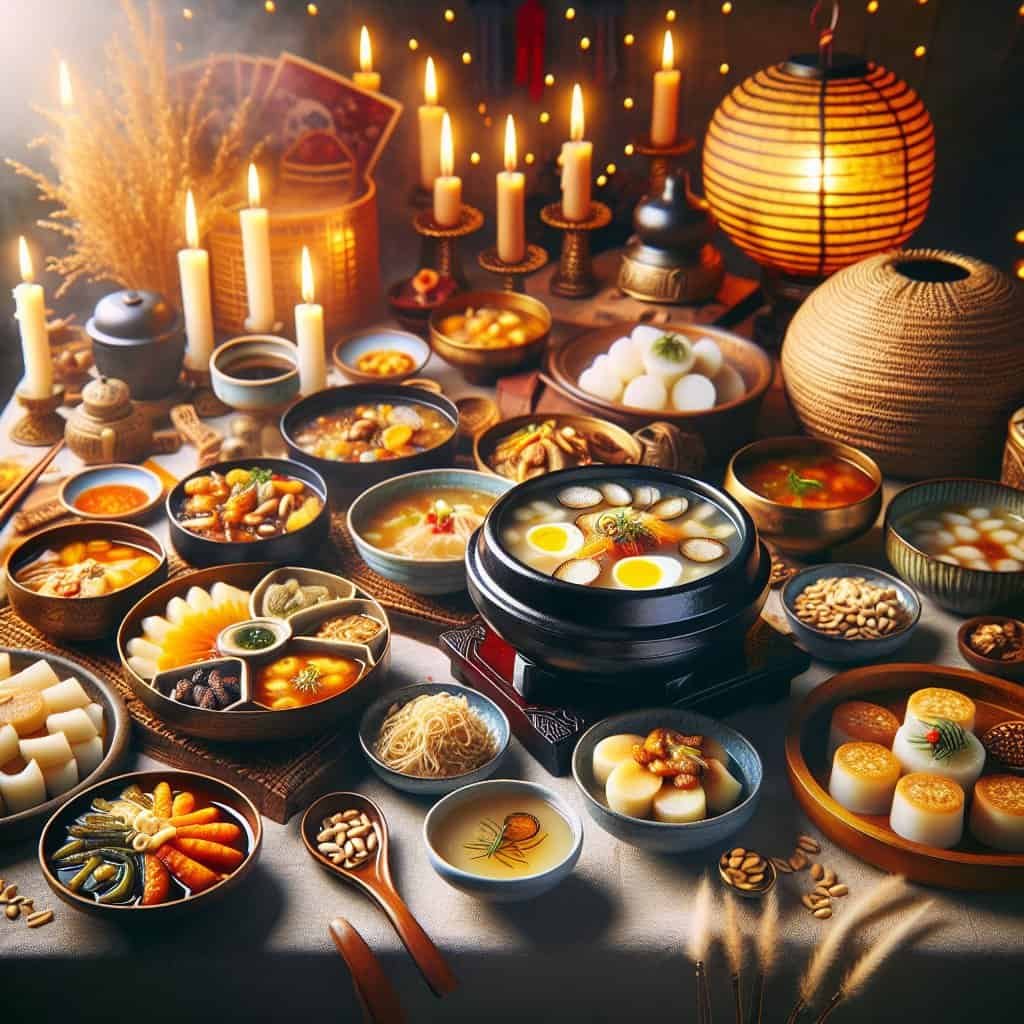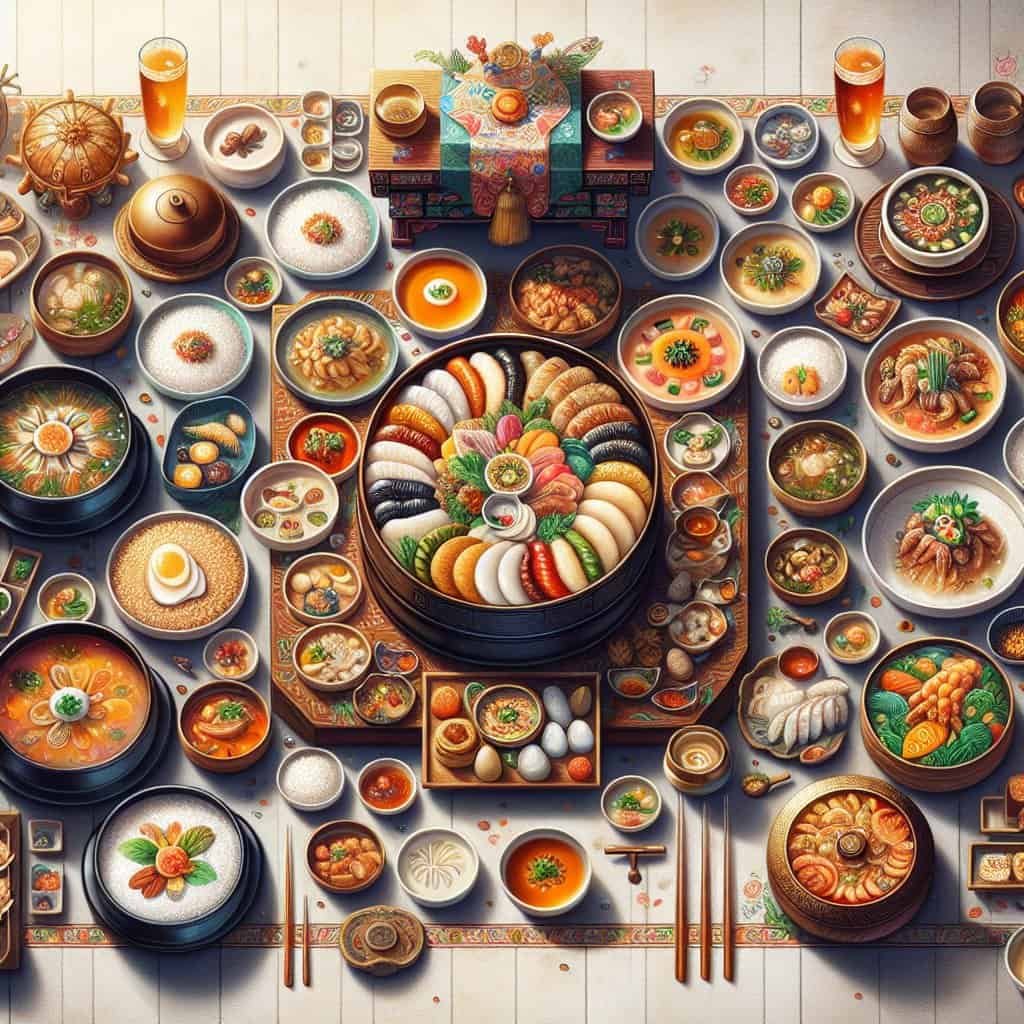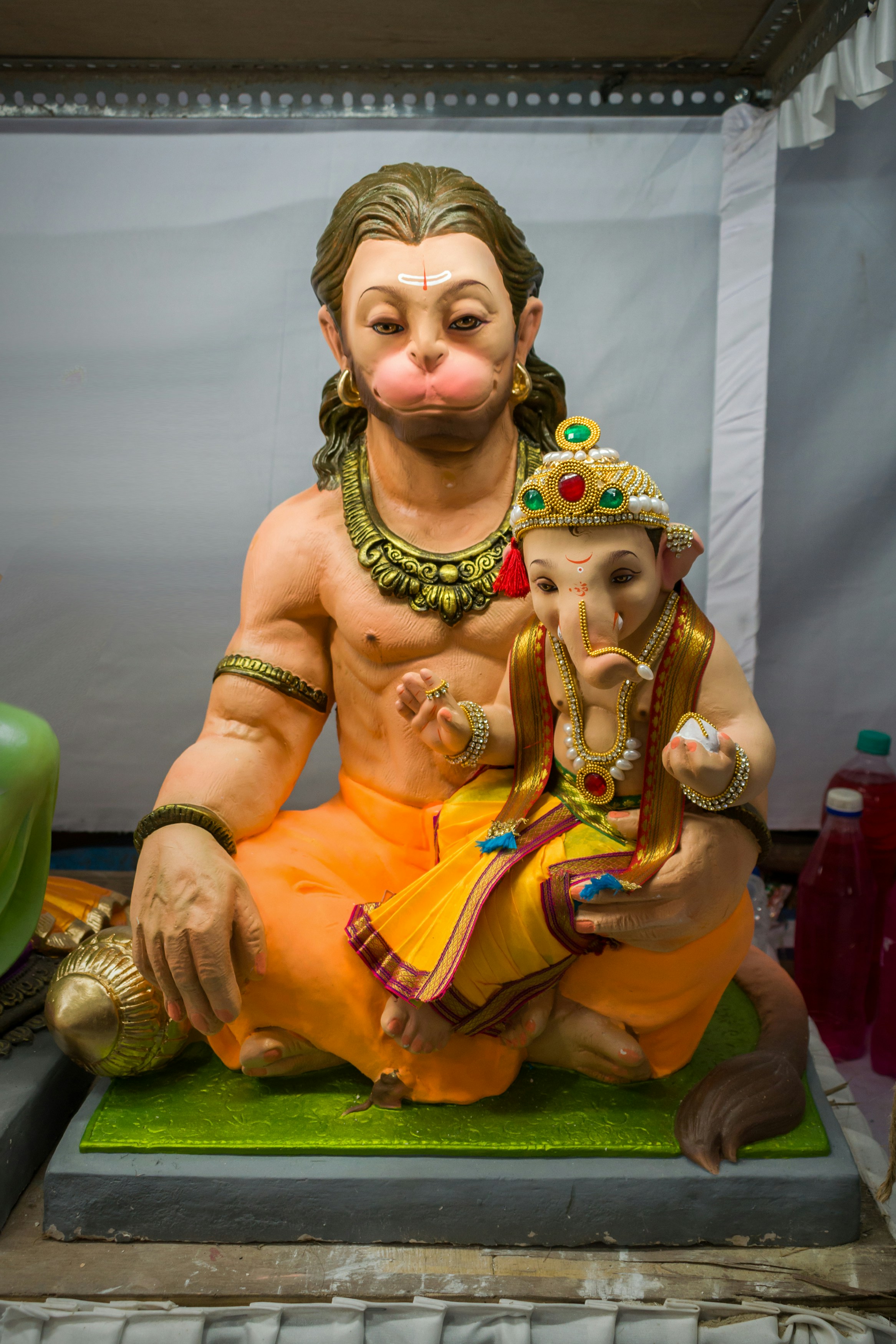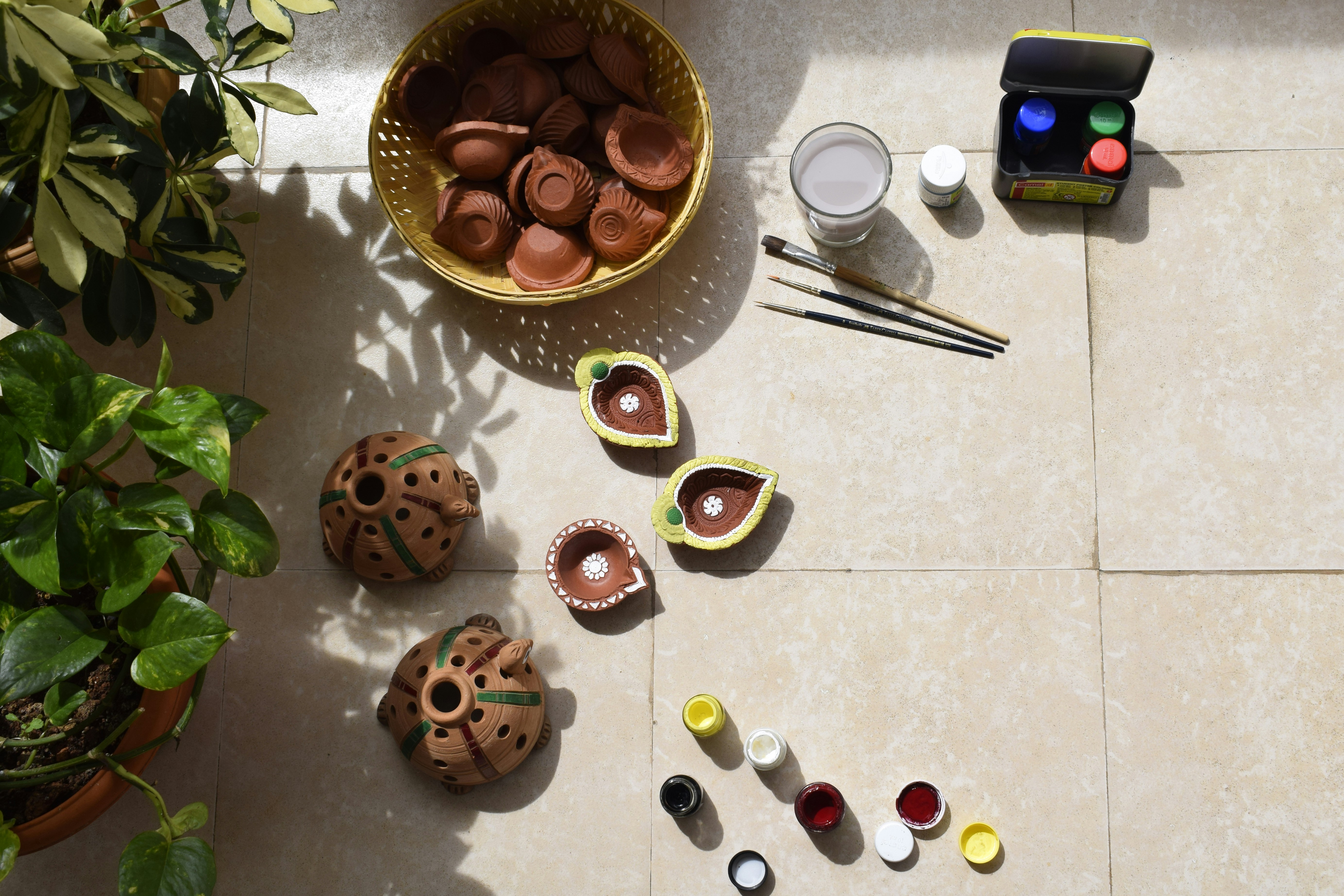During the festive season of Dongji in Korea, it’s an exciting opportunity to indulge in some mouthwatering traditional Korean dishes. From the hearty and flavorsome red bean porridge, known as patjuk, to the tantalizingly tender soy sauce-marinated beef, called jangjorim, the Dongji festival offers a delectable array of culinary delights. And let’s not forget about the iconic sticky rice cake, tteok, which comes in various flavors and shapes, making it a must-have treat for this joyous occasion. Whether you’re a food enthusiast or simply looking to expand your knowledge of Korean cuisine, the Dongji festival is the perfect time to savor these traditional dishes that bring joy and warmth to the holiday season.
Introduction
The Dongji Festival, also known as the Winter Solstice Festival, is a traditional Korean holiday that celebrates the arrival of winter and the longest night of the year. It is a time for families to come together, give thanks, and enjoy delicious food. In this comprehensive article, we will explore the origins and significance of the Dongji Festival, as well as the traditional Korean dishes that are commonly enjoyed during this festive season. We will also provide tips on preparation and cooking techniques, as well as how to fully enjoy these dishes in a traditional Korean manner. Lastly, we will discuss modern twists on these classic recipes and where you can find traditional Korean dishes during the Dongji Festival.
1. What is the Dongji Festival?
The Dongji Festival is an important holiday in Korean culture, symbolizing the turning point of winter and a time to celebrate the arrival of longer days. With its roots in ancient agricultural practices, this festival holds deep cultural significance for Koreans. It is believed that by celebrating Dongji, people can gather energy from nature and prepare themselves for the year ahead.
1.1 Origins of the Dongji Festival
The origins of the Dongji Festival can be traced back to the ancient farming communities in Korea. As an agrarian society, the winter solstice was a critical time for people to come together and pray for a bountiful harvest in the upcoming year. The festival was also an opportunity to express gratitude to the gods for the blessings received throughout the year. Over time, the Dongji Festival evolved into a cultural celebration, with various customs and traditions associated with the holiday.
1.2 Significance of the Dongji Festival
The Dongji Festival holds great significance in Korean culture. It is believed that on this day, the sun begins its journey northward again, bringing light and warmth back to the world. This astronomical event is seen as a metaphor for hope and renewal, symbolizing the triumph of light over darkness. People gather with their loved ones to share traditional dishes, exchange well wishes, and express gratitude for the blessings in their lives. The Dongji Festival is a time of reflection, unity, and celebration.
2. Traditional Korean Dishes for Dongji Festival
Food plays a central role in the Dongji Festival, as it is a time to enjoy hearty meals and bring warmth to the body during the cold winter months. Here are some traditional Korean dishes that are commonly prepared and enjoyed during the Dongji Festival:
2.1 Patjuk (Red Bean Porridge)
One of the most popular dishes during the Dongji Festival is Patjuk, a red bean porridge. Made from boiled red beans and glutinous rice, this dish has a smooth and comforting texture. It is traditionally garnished with sweet rice cakes called “saealsim” and served with a drizzle of honey. Patjuk is believed to bring good luck and fortune for the new year.
2.2 Mandu (Dumplings)
Mandu, or Korean dumplings, are a staple dish during the Dongji Festival. These delicious pockets of dough are filled with a mixture of minced meat, vegetables, and seasonings. They can be steamed, boiled, or pan-fried, and are often served with a soy-based dipping sauce. Mandu symbolizes abundance and unity, as families gather to make and enjoy these dumplings together.
2.3 Jeon (Korean Pancakes)
Jeon is a type of Korean pancake that is commonly enjoyed during special occasions, including the Dongji Festival. These savory pancakes are made by dipping ingredients such as seafood, vegetables, or meat into a flour-based batter and frying them until crispy. Jeon is often served as an appetizer or side dish and is perfect for sharing with family and friends.
2.4 Tteokguk (Rice Cake Soup)
Tteokguk is a traditional Korean soup made with sliced rice cakes, beef broth, and various toppings such as eggs, vegetables, and shredded meat. It is a significant dish during the Dongji Festival, as it symbolizes good luck and longevity. Eating Tteokguk is also believed to bring a year of prosperity and success.
2.5 Yakgwa (Honey Cookies)
Yakgwa are traditional Korean honey cookies that are enjoyed during the Dongji Festival. Made with flour, honey, and sesame oil, these sweet treats have a distinctive floral flavor and a crunchy texture. Yakgwa is often shaped into intricate flower or leaf designs and is served as a symbol of good fortune and happiness for the coming year.
2.6 Yaksik (Sweet Rice with Nuts and Jujubes)
Yaksik is a delicious and nutritious dish made with sweet glutinous rice, dried fruits, nuts, and honey. The ingredients are cooked together and shaped into bite-sized balls. Yaksik is believed to bring good luck and prosperity, and it is often served during festive occasions like the Dongji Festival.
2.7 Songpyeon (Half-Moon Rice Cakes)
Songpyeon are traditional Korean rice cakes that are shaped like half-moons and filled with various sweet or savory ingredients. Made from glutinous rice flour, these soft and chewy treats are steamed on a bed of pine needles, which gives them a unique aroma. Songpyeon is a symbolic dish during the Dongji Festival, representing a wish for a bountiful harvest and a year of happiness.
2.8 Dongji Patjuk (Five-Grain Porridge)
Dongji Patjuk is a variation of the traditional red bean porridge, made with a mixture of five grains – glutinous rice, black beans, red beans, millet, and barley. This nutritious and flavorful porridge is believed to have cleansing properties and is enjoyed during the Dongji Festival as a way to prepare the body for the new year.
2.9 Hobakjuk (Pumpkin Porridge)
Hobakjuk is a warm and creamy pumpkin porridge that is often served as a dessert during the Dongji Festival. Made from mashed pumpkin, glutinous rice flour, and sweetened with brown sugar or honey, this porridge has a smooth and comforting texture. Hobakjuk is believed to have medicinal properties and is said to promote healthy digestion.
2.10 Makgeolli (Traditional Rice Wine)
No Dongji Festival feast is complete without a glass of Makgeolli, a traditional Korean rice wine. This milky and slightly sweet alcoholic beverage is made by fermenting rice, water, and nuruk (a fermentation starter). Makgeolli pairs well with a variety of Korean dishes and adds a festive touch to any celebration.
3. Preparation and Cooking Techniques
To create delicious traditional Korean dishes for the Dongji Festival, it is important to use fresh ingredients and follow authentic cooking methods. Here are some tips on preparation and cooking techniques for traditional Korean dishes:
3.1 Ingredients for Traditional Korean Dishes
When preparing traditional Korean dishes, it is essential to use high-quality and authentic ingredients. Look for locally sourced ingredients such as fresh vegetables, meat, and seafood. Additionally, specific types of rice, flour, and seasonings play a significant role in creating the distinct flavors of Korean cuisine, so it is worth seeking out Korean or Asian grocery stores in your area to find these ingredients.
3.2 Cooking Methods and Techniques
Traditional Korean cooking methods and techniques often involve various processes such as steaming, boiling, frying, and fermentation. Steaming is commonly used for dishes like rice cakes and dumplings, as it helps retain moisture and gives the final product a soft texture. Boiling is frequently employed in making soups and porridges, allowing the flavors to meld together. Frying, whether pan-frying or deep-frying, adds crispy textures to foods like pancakes and dumplings. Finally, fermentation is a key technique used in making dishes like kimchi and fermented soybean pastes, which adds complex flavors and promotes healthy digestion.

4. How to Enjoy Traditional Korean Dishes During Dongji Festival
To fully enjoy traditional Korean dishes during the Dongji Festival, it is important to pay attention to the table setting and cultural etiquette for dining. Here’s how to make the most of your dining experience:
4.1 Table Setting and Presentation
In Korean culture, table setting and presentation are considered crucial elements of a meal. Traditional Korean meals are typically served on a low table called a “choban” and eaten while sitting on the floor. The table is adorned with various side dishes, rice, soup, and main dishes, all placed in separate small bowls or plates. The colors and arrangement of the dishes are carefully chosen to create a visually appealing and well-balanced meal.
4.2 Cultural Etiquette for Dining
When dining on traditional Korean dishes during the Dongji Festival, there are a few cultural etiquette practices to keep in mind. First, it is customary to wait for the eldest or most senior individual to start eating before you begin your meal. It is also common to use chopsticks and a spoon when eating Korean food. When taking a bite, it is polite to cover your mouth with your free hand. Finally, it is considered good manners to finish everything on your plate, as wasting food is seen as disrespectful.
5. Modern Twists on Traditional Dongji Festival Dishes
While traditional Korean dishes are cherished during the Dongji Festival, there are also modern twists on these classics that offer new flavors and possibilities. Here are two approaches to modernizing traditional Dongji Festival dishes:
5.1 Fusion Recipes
Fusion recipes combine traditional Korean ingredients with elements from other cuisines, resulting in unique and exciting flavors. For example, you could try adding a Mexican twist to mandu by filling them with a mixture of seasoned ground beef, cheese, and spices. Alternatively, you could fuse Korean and Italian cuisines by creating a Jeon-inspired pizza topped with ingredients like kimchi, bulgogi, and Mozzarella cheese. The possibilities are endless when it comes to fusion recipes, allowing you to put your own creative spin on traditional Dongji Festival dishes.
5.2 Healthy Alternatives
As more people prioritize health-conscious eating, there is a growing demand for healthier versions of traditional dishes. You can experiment with substituting ingredients or modifying cooking techniques to create healthier alternatives. For example, you can make Patjuk with whole grain rice and less sweetener, or replace the meat in mandu with tofu or mushrooms for a vegetarian-friendly version. By incorporating fresh produce and reducing sodium and sugar content, you can enjoy traditional Dongji Festival dishes in a healthier way without sacrificing flavor.

6. Where to Find Traditional Korean Dishes
If you are unable to prepare traditional Korean dishes for the Dongji Festival at home, there are several places where you can find these delightful delicacies:
6.1 Korean Restaurants and Eateries
Korean restaurants and eateries are excellent places to sample traditional Korean dishes during the Dongji Festival. Look for restaurants that specialize in Korean cuisine or offer authentic dishes on their menu. You can enjoy a variety of festive dishes such as Patjuk, Mandu, Jeon, and Tteokguk in a vibrant and welcoming atmosphere.
6.2 Dongji Festival Events and Markets
During the Dongji Festival, many cities and communities host special events and markets where you can find traditional Korean dishes. These events often feature food stalls offering a wide range of dishes, giving you the opportunity to experience the full array of flavors and aromas of the festival. Keep an eye out for local festivals, food fairs, and Dongji-specific gatherings in your area.
7. Conclusion
The Dongji Festival is a time when Koreans come together to celebrate the arrival of winter, reflect on the past year, and usher in hope and good fortune for the future. Traditional Korean dishes play a central role in this festive celebration, offering a taste of culture passed down through generations. From Patjuk and Mandu to Jeon and Tteokguk, these delightful dishes bring warmth and joy to the dining table. By incorporating these dishes into your Dongji Festival celebrations, whether by preparing them at home or exploring Korean eateries and events, you can fully immerse yourself in the rich flavors and traditions of Korean cuisine. So gather your loved ones, savor the delectable dishes with gratitude, and embrace the spirit of the Dongji Festival.



